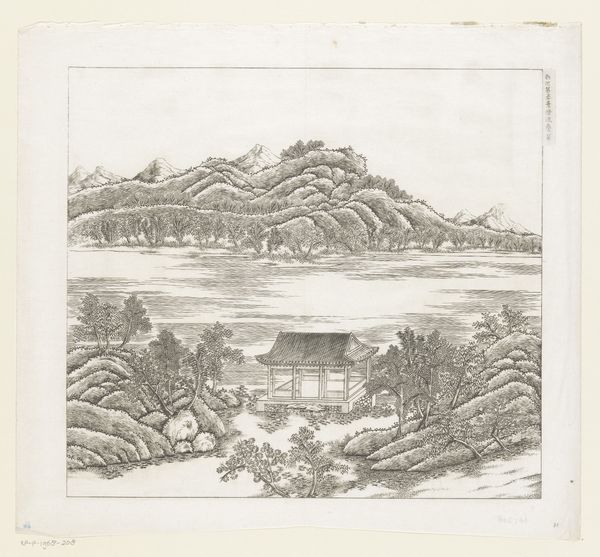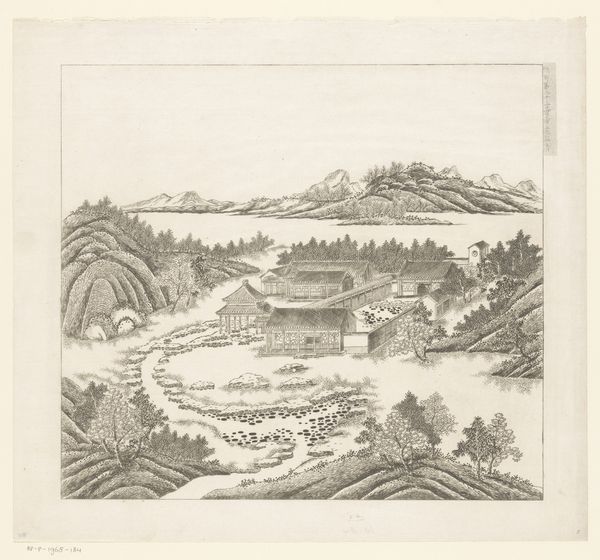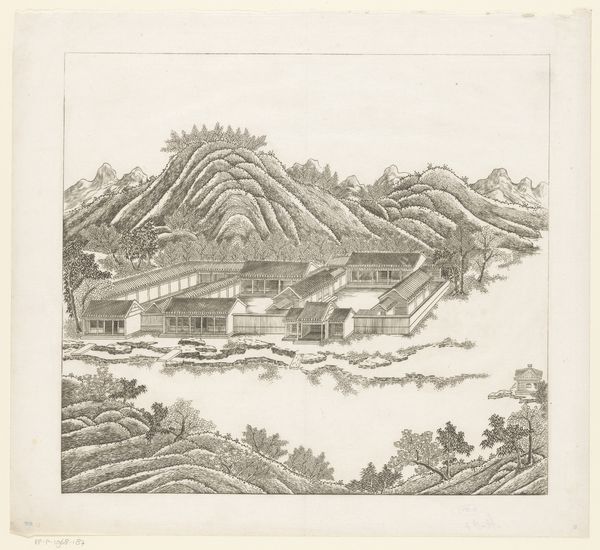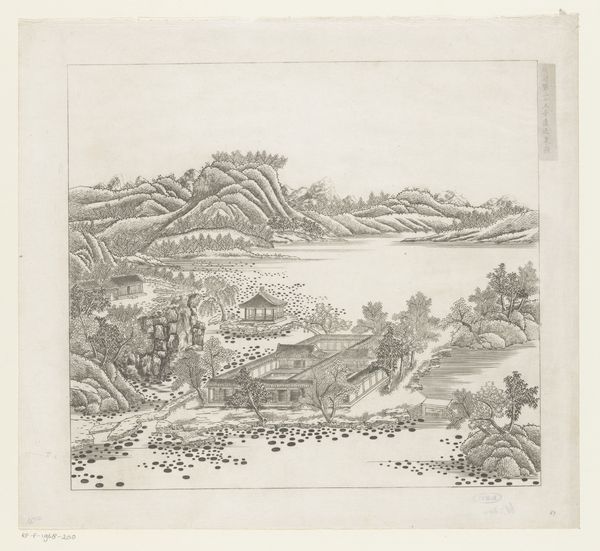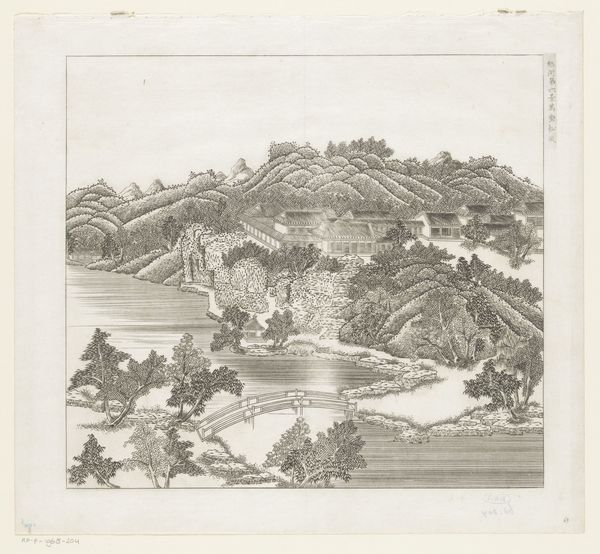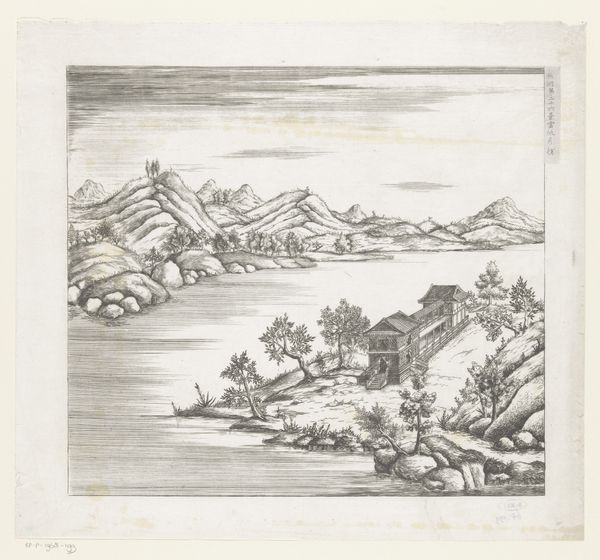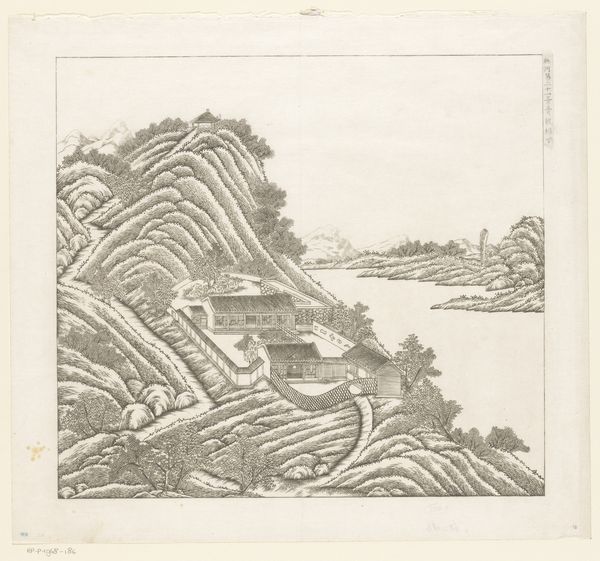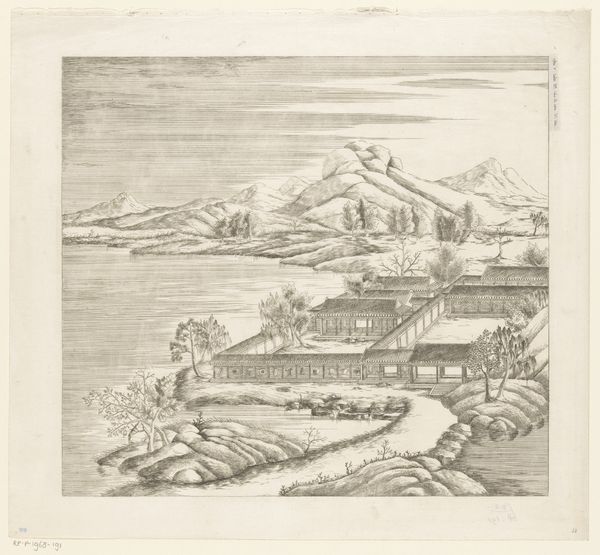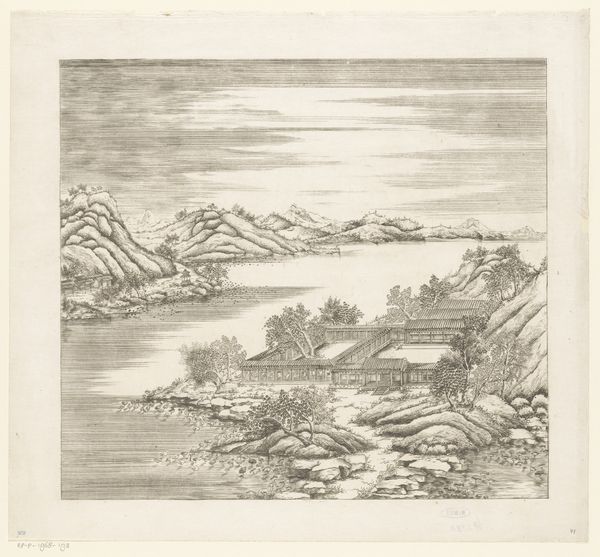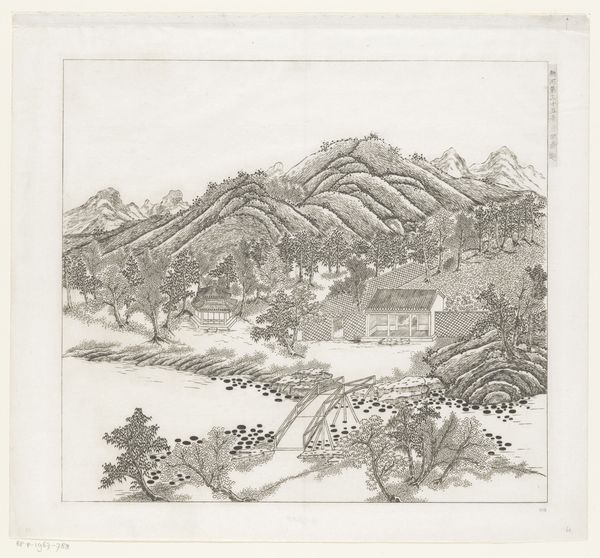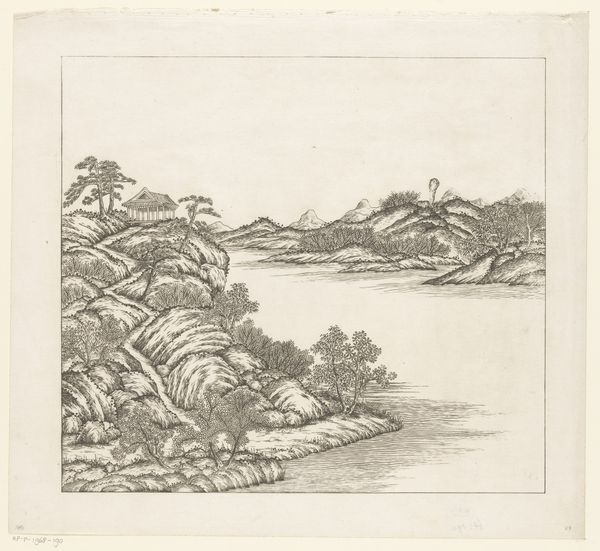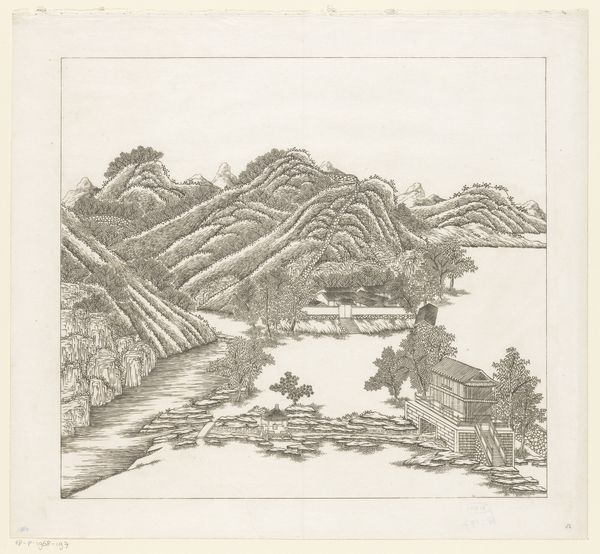
Gezicht op een deel van het keizerlijk zomerpaleis in Chengde (Jehol) te China 1712 - 1714
0:00
0:00
matteoripa
Rijksmuseum
drawing, paper, ink
#
drawing
#
asian-art
#
landscape
#
paper
#
ink
#
orientalism
Dimensions: height 324 mm, width 357 mm
Copyright: Rijks Museum: Open Domain
Curator: This delicate ink and paper drawing is titled "View of a Part of the Imperial Summer Palace in Chengde (Jehol) in China." It was created between 1712 and 1714 by Matteo Ripa. Editor: My initial reaction is one of serenity; there's a sense of balance between the architecture and the natural elements. The artist uses very fine lines, creating this aerial perspective, that makes it almost seem like a memory, or a vision. Curator: That sense of memory resonates, I think, with Ripa's positionality. He was an Italian missionary in the court of the Kangxi Emperor. This image, along with others he produced, played a crucial role in shaping European perceptions of China and, particularly, the imperial lifestyle. It served almost as a form of visual diplomacy. Editor: Looking closer at the composition, I am drawn to how Ripa frames the palace with the rolling hills in the background. The dark ink creates areas of high contrast, particularly with those densely drawn mountains. They really serve to anchor the lightness and almost ephemeral qualities of the palace itself. Curator: Absolutely. And we need to consider the implications of how these landscapes were being received in Europe at the time. Ripa was intentionally depicting the power and sophistication of the Chinese court for a European audience still largely unfamiliar with its complexities. This image reflects both his experience within that world, as well as his understanding of the visual rhetoric that would most impress audiences back home. Editor: Right, but his rendering is not photorealistic, and that lack of precise detailing directs the gaze and, indeed, constructs an idea more than conveying a specific truth. You mentioned the purpose, the intent of visual diplomacy, which means the artistic rendering becomes very persuasive. Curator: Precisely, and ultimately invites reflection on the exchange of ideas between different cultures, especially considering power dynamics in artistic depictions and the ongoing legacy they imprint on understanding history. Editor: And for me, the quiet intricacy and layering, with subtle tonal graduations, remind us of the enduring power of drawing to simplify, distill, and convey a whole world in just a few essential elements.
Comments
No comments
Be the first to comment and join the conversation on the ultimate creative platform.
